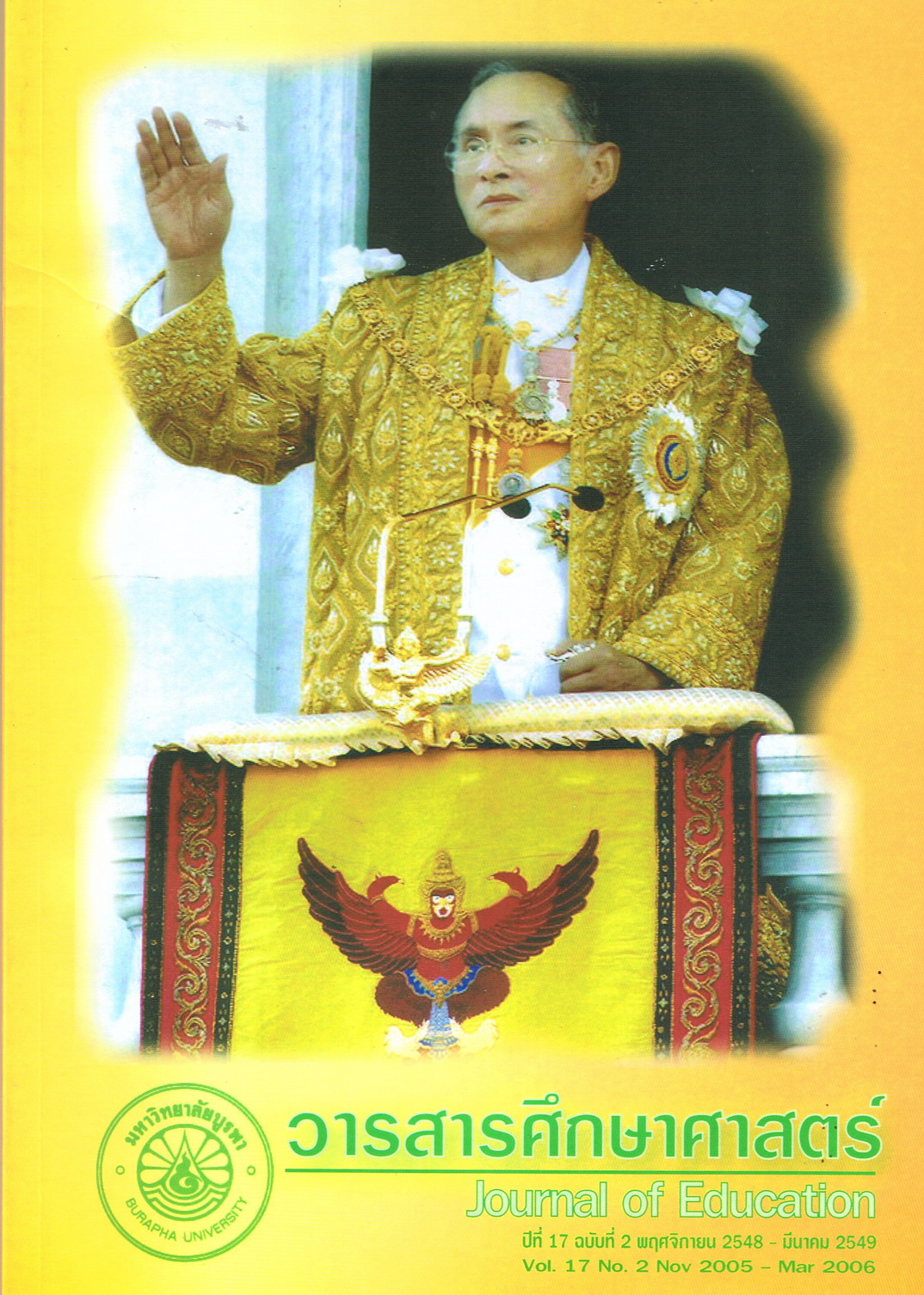หลักสูตรฝึกอบรมเพิ่มอำนาจในการทำงานเพื่อพัฒนาสมรรถนะของ เจ้าหน้าที่วิเคราะห์นโยบายและแผน กระทรวงศึกษาธิการ
Abstract
การสร้างหลักสูตรฝึกอบรมดำเนินการ ตามรูปแบบการวิจัยและพัฒนา มี 4 ขั้นตอน คือ ตอนที่ 1 การศึกษาและวิเคราะห์ข้อมูลพื้นฐาน ตอนที่ 2 การสร้างหลักสูตรฝึกอบรม ผู้วิจัยได้ สร้างหลักสูตรฝึกอบรม และแบบทดสอบความรู้ ตามเนื้อหา 3 หน่วยการเรียนรู้ ๆ ละ 30 ข้อ รวม 90 ข้อ หลังจากนั้นนำไปหาค่าความยากง่าย ค่าอำนาจ จำแนก และค่าความเชื่อมั่น โดยเลือกข้อที่อยู่ ในเกณฑ์ที่กำหนดไว้ รวม 65 ข้อ ได้ค่าความเชื่อมั่นทั้งฉบับ .91 ตอนที่ 3 การทดลองใช้หลักสูตรเพื่อหาประสิทธิภาพ โดยให้ผู้เข้ารับการฝึกอบรมเรียนรู้ผ่าน Website ที่กำหนด ตอนที่ 4 การปรับปรุงแก้ไขหลักสูตรฝึกอบรม ผลการศึกษาพบว่าคะแนนเฉลี่ยจากการประเมินสมรรถนะด้านความรู้ ด้านทักษะในการปฏิบัติงาน และด้านบุคลิกลักษณะในการปฏิบัติงานหลังการทดลองสูงกว่าก่อนการทดลองใช้หลักสูตรอย่างมีนัยสำคัญทางสถิติที่ระดับ .01 และเมื่อพิจารณาร้อยละของผลต่างของคะแนนการประเมินสมรรถนะด้านความรู้ ด้านทักษะในการปฏิบัติงาน และด้านบุคลิกลักษณะในการปฏิบัติงาน พบว่า คะแนนหลังการทดลองมากกว่าคะแนนก่อนการทดลอง ร้อยละ 21.46, 5.57 และ 5.00 ตามลำดับ ซึ่งสูงกว่าเกณฑ์ ที่กำหนดไว้ แสดงว่าหลักสูตรฝึกอบรมสามารถพัฒนาสมรรถนะด้านความรู้ ด้านทักษะในการปฏิบัติงาน และด้านบุคลิกลักษณะในการปฏิบัติงานของเจ้าหน้าที่วิเคราะห์นโยบายและแผนได้จริง
The training curriculum was developed through 4 stages of research and development as follows: Stage 1: Study and Analyze Fundamental Data. Stage 2: Design Curriculum : the researcher designed the training course and the test. The test consisted of 3 units with 90 questions (30 questions for 1 unit). After designing the test, the difficulty, discrimination and reliability values were calculated. 65 questions were chosen according to required criteria. An overall reliability was .91. Stage 3: Evaluate the Effectiveness of the Training Curriculum provided through identified website. Stage 4: Revise the Training Curriculum. The results of the study depicted that from the training evaluation of personal competencies in terms of knowledge, skills in operation, and personality in operation; the average scores the posttest were significantly higher than the pretest at the level .01 and the percentage of difference of scores between pre-test and post-test in the above evaluation, being found that the scores after the post-test were higher than the pre-test at 21.46%, 5.57% and 5.00% respectively, which were higher than the standard required. This implied that the training course had provided the group with the better ability to empower and develop personal competencies.
Downloads
Published
How to Cite
Issue
Section
License
บทความทุกบทความเป็นลิขสิทธิ์ของวารสารศึกษาศาสตร์ มหาวิทยาลัยบูรพา



